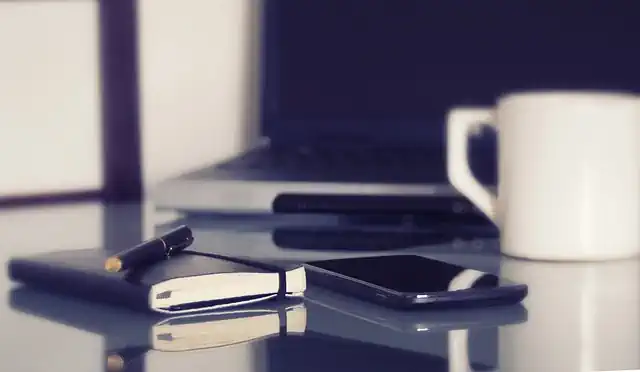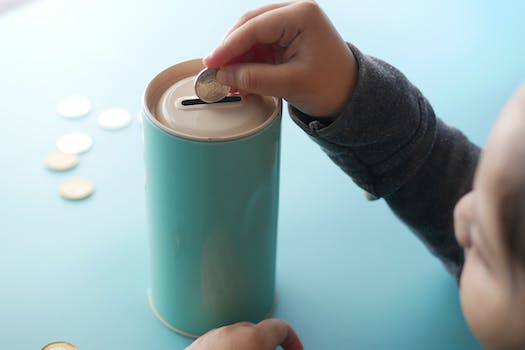How To Save On Keyboard
Introduction


Introduction:
Keyboards are an essential part of our daily lives, whether it’s for work or leisure. However, they can be quite expensive, especially if you’re looking for a high-quality one. Fortunately, there are several ways to save on keyboards without compromising on quality. In this article, we’ll discuss some tips on how to save on keyboards.
5 Tips for Extending the Lifespan of Your Keyboard
Are you tired of constantly replacing your keyboard? Do you want to save money and extend the lifespan of your keyboard? Look no further! Here are five tips to help you save on keyboard.
Firstly, keep your keyboard clean. Dust and debris can accumulate in between the keys, causing them to stick or malfunction. To prevent this, use a can of compressed air to blow out any debris. You can also use a soft-bristled brush to gently sweep away any dust. Additionally, you can use a damp cloth to wipe down the keys and remove any grime or fingerprints.
Secondly, be gentle with your keyboard. Avoid slamming your fingers down on the keys or using excessive force when typing. This can cause the keys to become loose or even break off. Instead, type with a light touch and use a gentle tapping motion. This will not only extend the lifespan of your keyboard but also reduce the risk of developing repetitive strain injuries.
Thirdly, avoid eating or drinking near your keyboard. Spills and crumbs can easily get trapped in between the keys, causing damage or malfunction. If you must eat or drink while using your computer, use a spill-proof container and be extra careful. If you do spill something on your keyboard, immediately turn off your computer and unplug the keyboard. Then, use a cloth to soak up any excess liquid and let the keyboard dry completely before using it again.
Fourthly, invest in a keyboard cover. A keyboard cover can protect your keyboard from spills, dust, and debris. It can also prevent the keys from becoming worn down or faded over time. Keyboard covers are available in a variety of materials, including silicone, plastic, and fabric. Choose one that fits your keyboard snugly and is easy to clean.
Lastly, consider using keyboard shortcuts. Keyboard shortcuts can help you navigate your computer more efficiently and reduce the amount of typing you need to do. For example, instead of using the mouse to copy and paste text, you can use the keyboard shortcut “Ctrl + C” to copy and “Ctrl + V” to paste. This will not only save you time but also reduce the wear and tear on your keyboard.
In conclusion, by following these five tips, you can extend the lifespan of your keyboard and save money in the long run. Keep your keyboard clean, be gentle with it, avoid eating or drinking near it, invest in a keyboard cover, and use keyboard shortcuts. With a little bit of care and attention, your keyboard can last for years to come.
DIY Keyboard Cleaning: A Step-by-Step Guide
Are you tired of typing on a dirty keyboard? Do you want to save money by cleaning it yourself instead of paying for a professional cleaning service? Look no further! In this article, we will provide you with a step-by-step guide on how to clean your keyboard at home.
Step 1: Turn off your computer and unplug your keyboard
Before you start cleaning your keyboard, make sure your computer is turned off and your keyboard is unplugged. This will prevent any damage to your computer and ensure your safety while cleaning.
Step 2: Shake out any loose debris
Hold your keyboard upside down and gently shake it to remove any loose debris such as crumbs, dust, or hair. You can also use a can of compressed air to blow out any debris that may be stuck in between the keys.
Step 3: Remove the keys
If you want to give your keyboard a deep clean, you can remove the keys. Use a keycap puller or a small flathead screwdriver to carefully remove each key. Place the keys in a bowl of warm soapy water and let them soak for a few minutes.
Step 4: Clean the keyboard
Using a soft-bristled brush or a microfiber cloth, gently clean the keyboard. You can use a mixture of water and rubbing alcohol to clean the keys and the surface of the keyboard. Be careful not to get any liquid inside the keyboard as this can damage the electronics.
Step 5: Dry the keyboard
After cleaning, use a dry cloth to wipe down the keyboard and keys. Make sure everything is completely dry before reassembling the keyboard.
Step 6: Reassemble the keyboard
Once everything is dry, it’s time to reassemble the keyboard. Carefully place each key back in its original position. Make sure each key clicks into place and is secure.
Congratulations! You have successfully cleaned your keyboard at home. Not only did you save money, but you also have a clean and hygienic keyboard to type on.
In addition to saving money, cleaning your keyboard regularly can also extend its lifespan. Dirt and debris can build up over time and cause damage to the electronics. By cleaning your keyboard, you can prevent this from happening and ensure your keyboard lasts for years to come.
To maintain a clean keyboard, it’s important to clean it regularly. You can make it a part of your weekly or monthly cleaning routine. You can also invest in a keyboard cover to protect it from spills and debris.
In conclusion, cleaning your keyboard at home is a simple and cost-effective way to maintain a clean and hygienic workspace. By following these simple steps, you can save money and extend the lifespan of your keyboard. So, what are you waiting for? Grab a cloth and start cleaning!
The Best Budget Keyboards Under $50
Are you in the market for a new keyboard but don’t want to break the bank? Look no further! We’ve compiled a list of the best budget keyboards under $50 that will save you money without sacrificing quality.
First on our list is the AmazonBasics Wired Keyboard. This keyboard is a steal at only $14.99 and offers a full-size layout with a number pad. It also has quiet keys, making it perfect for shared spaces or late-night typing sessions. The AmazonBasics Wired Keyboard is compatible with both Windows and Mac operating systems, making it a versatile option for any user.
Next up is the Logitech K120 Keyboard. This keyboard is priced at $19.99 and offers a sleek design with a spill-resistant construction. The keys are low-profile and quiet, making it a great option for those who prefer a more subtle typing experience. The Logitech K120 Keyboard also has adjustable tilt legs, allowing for a comfortable typing angle.
If you’re looking for a wireless option, the Microsoft Wireless Desktop 900 is a great choice. Priced at $39.99, this keyboard and mouse combo offers a wireless range of up to 30 feet and a battery life of up to 2 years. The keyboard has quiet keys and customizable shortcut keys, making it a great option for both work and play.
For those who prefer a mechanical keyboard, the Redragon K552 Mechanical Gaming Keyboard is a great budget option. Priced at $34.99, this keyboard offers a compact design with customizable RGB lighting. The keys are tactile and responsive, making it a great option for gamers or those who prefer a more tactile typing experience.
Last but not least, the HP K1500 Keyboard is a great budget option for those who need a keyboard with multimedia keys. Priced at $14.99, this keyboard offers a full-size layout with dedicated multimedia keys for easy access to volume, play/pause, and more. The keys are also spill-resistant, making it a great option for those who like to snack while they work.
In conclusion, there are plenty of great budget keyboards available for under $50. Whether you prefer a wired or wireless option, a mechanical or quiet typing experience, there is a keyboard out there for you. By choosing one of these budget options, you can save money without sacrificing quality. Happy typing!
How to Repair a Sticky or Unresponsive Keyboard
Have you ever been typing away on your computer, only to realize that some of the keys are sticking or not responding at all? It can be frustrating and slow down your work. But before you rush out to buy a new keyboard, there are some simple steps you can take to repair a sticky or unresponsive keyboard.
First, try cleaning the keyboard. Over time, dust, dirt, and other debris can accumulate under the keys, causing them to stick or not work properly. To clean your keyboard, turn off your computer and unplug the keyboard. Then, use a can of compressed air to blow out any debris from under the keys. You can also use a soft-bristled brush to gently sweep away any dirt or dust. If there are any stubborn spots, you can use a cotton swab dipped in rubbing alcohol to clean them.
If cleaning the keyboard doesn’t solve the problem, you may need to remove the keys and clean them individually. This can be a bit more time-consuming, but it’s worth it if it means saving your keyboard. To remove the keys, use a small flathead screwdriver or a keycap puller (which you can buy online or at a computer store) to gently pry them off. Be careful not to damage the keys or the keyboard itself. Once the keys are removed, you can clean them with a damp cloth or a cotton swab dipped in rubbing alcohol. Make sure they are completely dry before reattaching them to the keyboard.
If your keyboard is still not working properly after cleaning it, you may need to replace the keyboard membrane. The keyboard membrane is a thin layer of plastic that sits between the keys and the circuit board. Over time, this membrane can become worn or damaged, causing the keys to stick or not work at all. To replace the membrane, you will need to open up your keyboard (which can be tricky, so be sure to follow a guide or tutorial). Once you have access to the membrane, you can remove it and replace it with a new one. You can buy replacement membranes online or at a computer store.
If you’re not comfortable with opening up your keyboard or replacing the membrane yourself, you can always take it to a professional. Many computer repair shops offer keyboard repair services, and they can diagnose and fix the problem for you. This may cost more than doing it yourself, but it can save you the hassle and ensure that your keyboard is working properly.
In conclusion, a sticky or unresponsive keyboard can be a frustrating problem, but it’s not necessarily a reason to buy a new one. By cleaning your keyboard, removing and cleaning the keys, or replacing the keyboard membrane, you can save your keyboard and avoid the expense of buying a new one. And if you’re not comfortable with doing it yourself, there are professionals who can help. So don’t give up on your keyboard just yet – try these tips and see if you can get it working like new again.
Maximizing Efficiency: Keyboard Shortcuts for Productivity
Are you tired of spending hours typing away at your keyboard? Do you wish there was a way to increase your productivity and get more done in less time? Well, look no further! In this article, we will explore the world of keyboard shortcuts and how they can help you save time and increase your efficiency.
First and foremost, it’s important to understand what keyboard shortcuts are. Simply put, they are a combination of keys that perform a specific function. For example, instead of clicking on the “copy” button with your mouse, you can simply press “Ctrl + C” on your keyboard. This may seem like a small change, but over time, it can save you a significant amount of time and effort.
One of the most commonly used keyboard shortcuts is “Ctrl + Z,” which is the undo function. This is incredibly useful when you make a mistake and need to quickly revert back to the previous action. Similarly, “Ctrl + Y” is the redo function, which allows you to undo your undo and go back to the action you just reverted.
Another useful shortcut is “Ctrl + F,” which opens up the find function. This is particularly helpful when you’re working on a large document and need to quickly locate a specific word or phrase. By using this shortcut, you can save yourself the time and effort of scrolling through the entire document to find what you’re looking for.
If you’re someone who frequently works with spreadsheets, you’ll definitely want to familiarize yourself with the “Ctrl + Shift + Arrow” shortcut. This allows you to quickly select an entire row or column, which can be incredibly helpful when you’re trying to manipulate data.
Of course, these are just a few examples of the many keyboard shortcuts that are available. Depending on the software you’re using, there may be dozens or even hundreds of shortcuts that can help you save time and increase your productivity.
So, how can you start incorporating keyboard shortcuts into your workflow? The first step is to familiarize yourself with the most commonly used shortcuts for the software you’re using. Many programs will have a list of shortcuts available in the help menu, or you can do a quick Google search to find a comprehensive list.
Once you’ve identified the shortcuts you want to use, it’s important to practice using them regularly. At first, it may feel awkward and unnatural to use a keyboard shortcut instead of clicking on a button with your mouse. However, with practice, you’ll start to develop muscle memory and the shortcuts will become second nature.
It’s also worth noting that not all keyboard shortcuts are created equal. Some may be more useful than others, depending on your specific workflow and the tasks you’re trying to accomplish. Don’t be afraid to experiment with different shortcuts and find the ones that work best for you.
In conclusion, keyboard shortcuts are a powerful tool that can help you save time and increase your productivity. By familiarizing yourself with the most commonly used shortcuts and practicing using them regularly, you can streamline your workflow and get more done in less time. So, what are you waiting for? Start incorporating keyboard shortcuts into your workflow today and see the difference it can make!
Eco-Friendly Keyboard Options: Sustainable and Affordable
Are you looking for ways to save money and reduce your environmental impact? One often overlooked area is your computer accessories, specifically your keyboard. Luckily, there are eco-friendly keyboard options that are both sustainable and affordable.
Firstly, consider purchasing a keyboard made from sustainable materials. Many companies now offer keyboards made from bamboo, which is a fast-growing and renewable resource. Bamboo keyboards are not only eco-friendly, but they also have a unique and stylish look. Another option is keyboards made from recycled materials, such as plastic bottles or old electronics. These keyboards not only reduce waste but also give new life to materials that would otherwise end up in a landfill.
Another way to save on your keyboard is to opt for a wireless option. Wireless keyboards eliminate the need for cords and cables, which can be costly and contribute to clutter. Additionally, wireless keyboards often have a longer lifespan than their wired counterparts, as they are not subject to the wear and tear of being constantly plugged and unplugged.
If you prefer a wired keyboard, consider purchasing one with a detachable cord. This allows you to replace the cord if it becomes damaged or worn out, rather than having to replace the entire keyboard. This not only saves you money but also reduces waste.
When it comes to keyboard usage, there are also ways to save energy and reduce your environmental impact. One simple way is to turn off your keyboard when not in use. This not only saves energy but also extends the lifespan of your keyboard. Additionally, consider adjusting the brightness of your keyboard backlight. Lowering the brightness not only saves energy but also reduces eye strain.
Finally, consider purchasing a keyboard with a low carbon footprint. Many companies now offer keyboards that are manufactured using renewable energy sources, such as solar or wind power. These keyboards not only reduce carbon emissions but also support the growth of renewable energy.
In conclusion, there are many eco-friendly keyboard options that are both sustainable and affordable. By purchasing a keyboard made from sustainable materials, opting for a wireless option, choosing a keyboard with a detachable cord, turning off your keyboard when not in use, adjusting the brightness of your backlight, and purchasing a keyboard with a low carbon footprint, you can save money and reduce your environmental impact. So, the next time you are in the market for a new keyboard, consider these eco-friendly options and make a positive impact on the planet.
Upcycling Old Keyboards: Creative DIY Projects
Are you tired of your old keyboard taking up space in your home? Instead of throwing it away, why not upcycle it into something new and useful? Upcycling old keyboards is a great way to save money and reduce waste. Here are some creative DIY projects to help you get started.
1. Keyboard Jewelry
One of the easiest ways to upcycle an old keyboard is to turn it into jewelry. You can use the keys to make earrings, necklaces, bracelets, and even rings. All you need is a pair of pliers, some jump rings, and a few other jewelry-making supplies. You can also add beads or other embellishments to make your jewelry unique.
2. Keyboard Coasters
Another fun project is to turn your old keyboard into coasters. Simply remove the keys and glue them onto a cork or foam board. You can arrange them in any pattern you like, or spell out words or phrases. These coasters are not only functional, but they also make great conversation starters.
3. Keyboard Art
If you’re feeling artistic, you can use the keys to create a unique piece of art. You can arrange them in a pattern or use them to spell out a message. You can also paint the keys or add other embellishments to make your art stand out. This is a great way to add some personality to your home decor.
4. Keyboard Keychains
Keychains are another easy project that you can make with old keyboard keys. Simply attach a jump ring to each key and add a chain or ribbon. You can also add beads or other embellishments to make your keychains more interesting. These make great gifts for friends and family.
5. Keyboard Magnets
If you have a lot of keys, you can turn them into magnets. Simply glue a magnet to the back of each key and you’re done. You can use these magnets to hold notes or pictures on your fridge, or give them as gifts.
6. Keyboard Bookmarks
If you’re a book lover, you can turn your old keyboard into bookmarks. Simply remove the keys and attach them to a ribbon or piece of string. You can also add beads or other embellishments to make your bookmarks more interesting. These make great gifts for fellow bookworms.
7. Keyboard Picture Frames
Finally, you can use your old keyboard to create unique picture frames. Simply remove the keys and glue them onto a plain picture frame. You can arrange them in any pattern you like, or spell out words or phrases. These frames are a great way to showcase your favorite photos.
In conclusion, upcycling old keyboards is a fun and creative way to save money and reduce waste. Whether you’re making jewelry, coasters, art, keychains, magnets, bookmarks, or picture frames, there are endless possibilities for what you can create. So next time you’re thinking about throwing away your old keyboard, think again and try one of these DIY projects instead.
Conclusion
Conclusion: To save on keyboard, one can consider buying a budget-friendly keyboard, opting for a wired keyboard instead of a wireless one, taking care of the keyboard by cleaning it regularly, and avoiding spilling liquids on it. Additionally, one can also consider purchasing a keyboard cover to protect it from dust and dirt.







